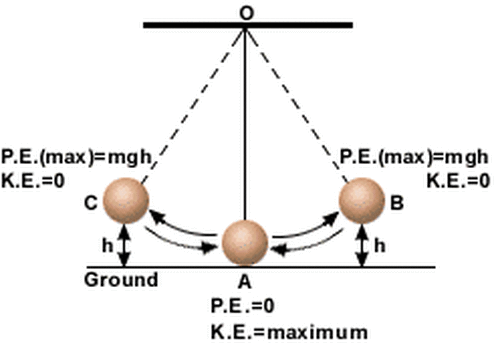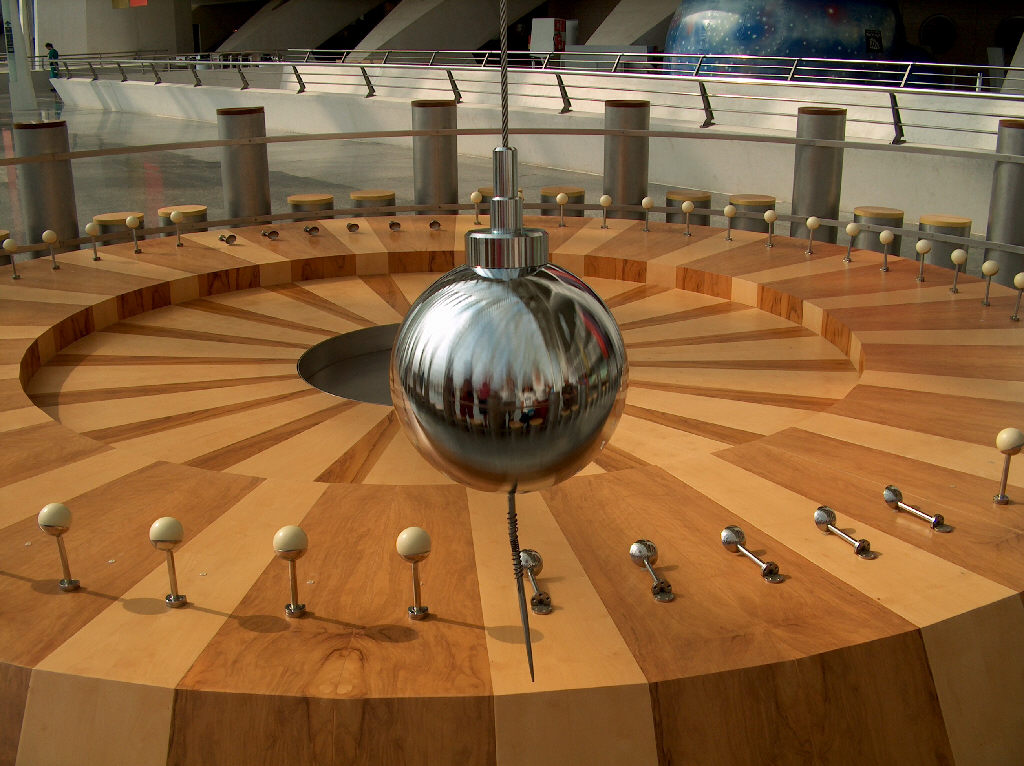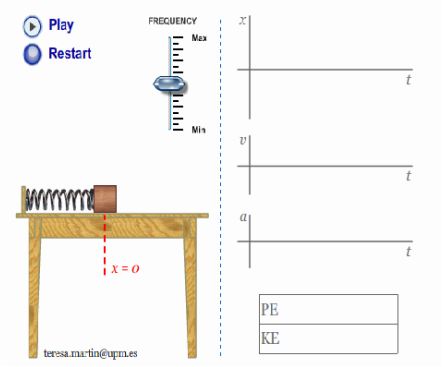Dolphins jumping during a delivery trip across the Mediterrean. Photo: Mark Roworth
|
Home >> AP Physics I >> Simple Harmonic Motion >> Pendulums
|
6.2 - Pendulums
A simple pendulum is a mass hanging on the end of a string that is fixed at the top so that it can swing. The equations that model pendulums are only really valid for small angles of swing. As the swing angle increases above 10 degrees, the equations start to become inaccurate. The person that first noticed the constancy of the period of a pendulum was a very bored Galileo sitting in a church watching incense burners. These must have been on very long chains as his only method of timing the swings was his pulse! The energy changes that occur here have been met before: gravitational potential energy to kinetic energy. The height involved is the vertical height of the swing, not the arc length. Galileo realised that the amplitude of swing had no effect on the period - and hence discovered the principle that governed the first really accurate clocks.
The variables that govern the period and hence frequency of a pendulum are a) the length of the pendulum and b) the gravitational field strength (usually constant).
Another important discovery is that the conservation of angular momentum means that a pendulum will continue to swing in the same plane - even if the surroundings rotate about the pivot. This led to a scientist, called Foucault, in Paris using a huge pendulum to demonstrate the rotation of the Earth - an example of this can be seen in Boston Science museum as well as Foucault's original one in Paris.
\[T = 2\pi \sqrt{\frac{l}{g}}\]
The variables that govern the period and hence frequency of a pendulum are a) the length of the pendulum and b) the gravitational field strength (usually constant).
Another important discovery is that the conservation of angular momentum means that a pendulum will continue to swing in the same plane - even if the surroundings rotate about the pivot. This led to a scientist, called Foucault, in Paris using a huge pendulum to demonstrate the rotation of the Earth - an example of this can be seen in Boston Science museum as well as Foucault's original one in Paris.
\[T = 2\pi \sqrt{\frac{l}{g}}\]


